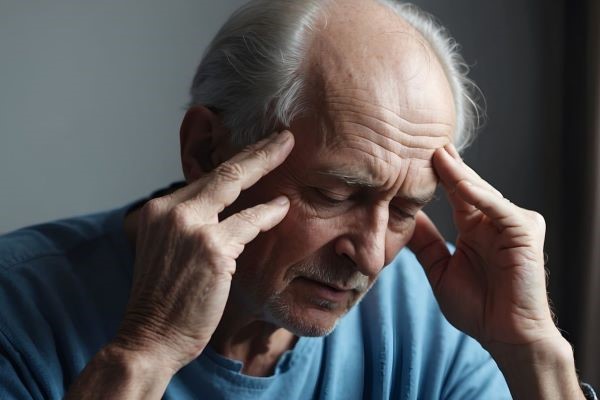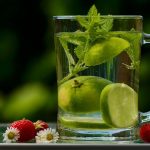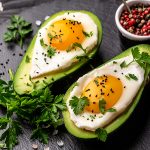Everybody gets headaches. Some more often than others. Some more severe than others.
And for lack of a better word, they’re a real headache to get rid of! So what causes them, how can you can prevent them, and how can you get rid of them faster?
The most common type of headache is what we call a “tension headache.” They create a dull, steady ache on both sides of your head. The pain might even extend down the sides of the neck.
The biggest contributor to these headaches is stress. It creates a “fight or flight” response that releases chemicals in your brain. These can cause vascular changes in your brain’s blood vessels. This, in turn, can trigger a tension headache.
Those tight muscles in the back, neck and scalp only add to it. And when you’re in a constant state of stress, these muscles remain tense and tight.
Poor posture and sleeping in a position that places stress on your neck and shoulder muscles don’t help. They just tighten your muscles even further. Plus, people who are stressed often clench their jaws. Others tend to grind their teeth.
Any single one of these factors can be the spark that sets off a tension headache.
Stressed Out and Feeling the Pain
Stress can be a big cause of migraines, too. And experiencing an intense, throbbing pain in your head for long periods of time can stress you out. That can lead to a pretty vicious cycle of stress and migraines… and stress and migraines.
So the first thing you can do to prevent tension headaches and migraines is shake off that stress!
I like relaxation techniques such as deep breathing exercises, massage therapy and meditation. Acupuncture is also a great stress reliever.
I’ve also found yoga, tai chi and other ancient disciplines to be extremely helpful when it comes to resolving head pain. Not only do they teach breathing techniques and meditation to help you de-stress and gain mental clarity. They also include gentle stretches and movements that can loosen up those tense muscles.
Physical activity also helps ease stress. It affects brain neurotransmitters that influence mood and behavior. Activity releases endorphins that reduce your perception of pain. Plus, it gets your blood flowing and helps improve oxygen delivery to brain.
Better yet, regular movement is proven to help ease headache and migraine frequency.
When researchers tested the use of exercise, relaxation strategies or the migraine drug topiramate against each other, they found there was no significant difference between the three. In other words, exercise and relaxation strategies worked just as well as the drug when it came to preventing migraines.
It’s not hard to get moving. You don’t even have to go the gym. Just take a brisk walk. Take a bike ride. Go for a swim. These are simple activities you can enjoy on a regular basis.
What Else Triggers Headaches and Migraines?
While stress is one of the leading causes of head pain, it’s not the only one. Here are a few more things you can do to ward off headaches before they begin.
Sleep well. If you don’t get enough sleep or wake up a lot during the night, it can trigger a headache or migraine. And getting more than eight hours can do the same. So try and hit the sweet spot of seven to eight hours a night.
Drink plenty of water. Dehydration can case both migraine and non-migraine headaches. Get your daily hydration started when you wake up, and keep it going all day long. You can drink your water plain or with lemon juice. Top it off with an orange or lime wedge. Add a slice of kiwi. Just remember to drink it!
Don’t skip meals. Missing regular, healthy meals can be another trigger. It’s the low blood sugar that sets off the reaction. Regularly eating sugars and processed carbs won’t do you any favors either.
Watch out for certain food ingredients. Some of the top food that trigger migraines are those that contain tyramine. Aged cheese, wine cured meats and chocolate all fall in this group. You should also watch for foods containing aspartame (NutraSweet; Equal), MSG (monosodium glutamate) and caffeine.
Change your routine. If you are involved in activities that require repetitive movements or staying in the same position for long periods of time, remember to take plenty of breaks and stretch those muscles out. Whenever possible, avoid positions that strain your neck and shoulders.
Try taking a few supplements. The B vitamins, especially B2, help protect against headaches and decrease the incidence of migraines. CoQ10 helps reduce the duration and frequency of migraine attacks. If you’re magnesium deficient, boosting magnesium intake can help resolve both tension-type headaches and migraines.
If a severe headache or migraine does strike, shut the lights down. Turn off the TV. Put on some soothing music or sounds of nature. Then settle down and relax with a heating pad to relieve tense neck and shoulder muscles. Alternate the heat with cool pack to relieve pain and swelling.
Placing a cold pack on your forehead can also help ease the throbbing. (If you don’t have a cool pack, a bag of frozen vegetables or ice cubes wrapped in a towel work just as well.)
As Gilda Radner used to say on Saturday Night Live… “If it’s not one thing, it’s another.” So take time to learn your triggers and find what that other thing is.
SOURCES:
Chowdhury D. Tension type headache. Ann Indian Acad Neurol. 2012;15(Suppl 1):S83-S88.
Kisan R, Sujan M, Adoor M, et al. Effect of Yoga on migraine: A comprehensive study using clinical profile and cardiac autonomic functions. Int J Yoga. 2014;7(2):126-132.
Abbott RB, Hui KK, Hays RD, Li MD, Pan T. A randomized controlled trial of tai chi for tension headaches. Evid Based Complement Alternat Med. 2007;4(1):107-113.
Jackson EM. Stress relief: The role of exercise in stress management. ACSM’s Health & Fitness Journal. 2013 May 1;17(3):14-9.
Varkey E, Cider A, Carlsson J, Linde M. Exercise as migraine prophylaxis: a randomized study using relaxation and topiramate as controls. Cephalalgia. 2011 Oct;31(14):1428-38.
Krøll LS, Hammarlund CS, Linde M, Gard G, Jensen RH. The effects of aerobic exercise for persons with migraine and co-existing tension-type headache and neck pain. A randomized, controlled, clinical trial. Cephalalgia. 2018 Oct;38(12):1805-1816.
Thompson DF, Saluja HS. Prophylaxis of migraine headaches with riboflavin: A systematic review. J Clin Pharm Ther. 2017 Aug;42(4):394-403.
Sazali S, Badrin S, Norhayati MN, Idris NS. Coenzyme Q10 supplementation for prophylaxis in adult patients with migraine-a meta-analysis. BMJ Open. 2021 Jan 5;11(1):e039358.
Maier JA, Pickering G, Giacomoni E, Cazzaniga A, Pellegrino P. Headaches and Magnesium: Mechanisms, Bioavailability, Therapeutic Efficacy and Potential Advantage of Magnesium Pidolate. Nutrients. 2020 Aug 31;12(9):2660.



